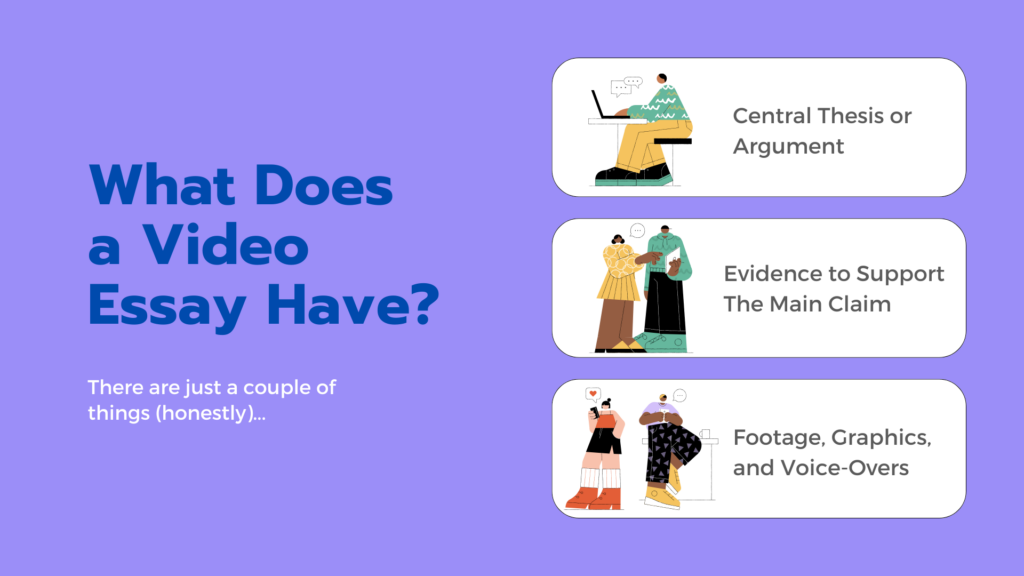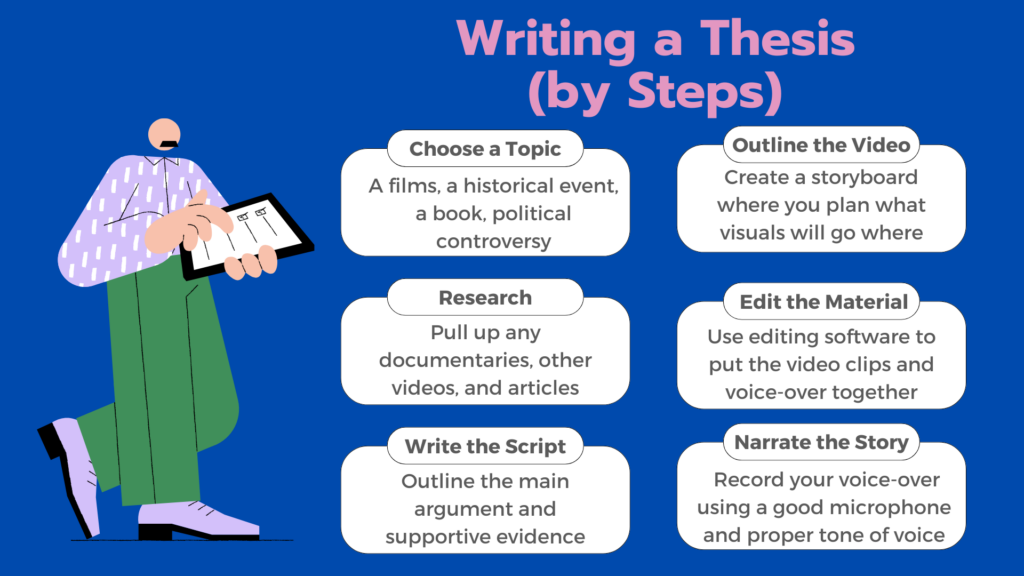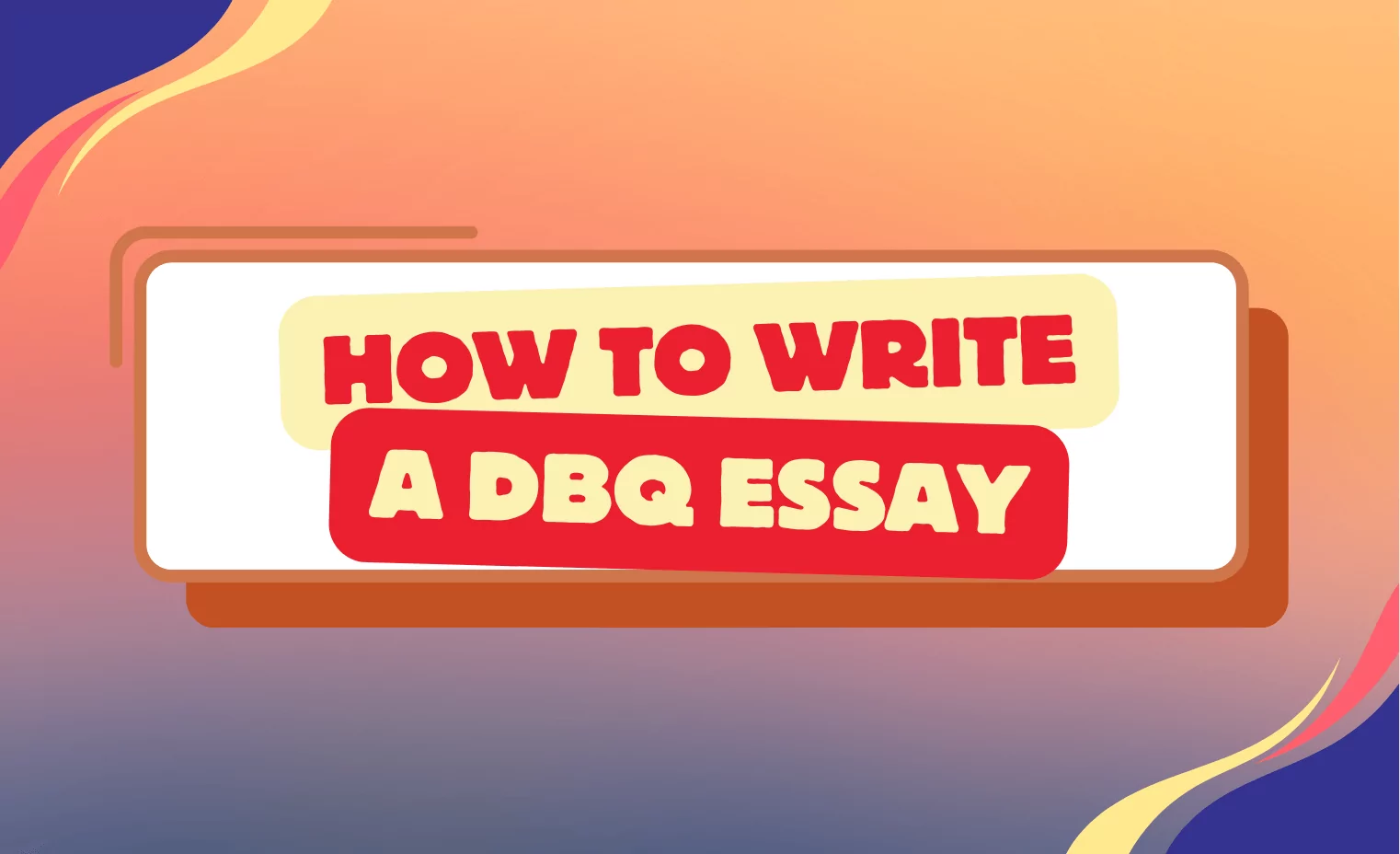
- AI Essay Writer
- Paraphraser
- AI Text Summarizer
- AI Research Tool
- AI PDF Summarizer
- Outline Generator
- Essay Grader
- Essay Checker
Kicking things off, let’s define what a video essay actually is . Just like a regular essay, you need to develop a clear argument, support it with evidence, and present your ideas logically. But instead of just using text, you combine visuals, narration, and sometimes music to help get your point across.
So, how does a video essay stand out from other types of visual content? Unlike a regular YouTube vlog or a documentary, video essays are structured around a central thesis or argument. The creator needs to put together footage, graphics, and voice-overs not just to entertain but mostly to inform or persuade their audience. Usually, this type of work goes well for analyzing a film, discussing a social issue, or exploring a personal topic.

One great example of this format is the YouTube channel Every Frame a Painting . Though, some might say they are more of a documentary-type channel. Still, if you look into them, you’ll that they analyze elements of the film like camera work or sound design and use clips from movies to illustrate their points, creating something that’s not only informative but a treat to watch too.

Video Essay Definition: Structure
Now that you know what a video essay is, let’s break down how to structure one. The structure of a video essay is similar to a traditional essay in many ways. You still need an introduction, body, and conclusion. However, since video essays combine different media, there are some extra elements to keep in mind.
📌 Introduction → Set the Scene
Just like any good essay, your video essay should start with an introduction that grabs the viewer’s attention. This is where you lay out your thesis, explain what your video will cover, and maybe even show a sneak peek of the visuals or ideas you’ll dive into later. Keep it short but compelling.
📌 Body → Dive Into Your Argument
In the body of your video essay, you’ll present your argument in depth, supporting it with visuals (images, graphs, parts of other videos), interviews, or other footage. You can organize the body into sections, each one focusing on a different aspect of your topic.
If you’re analyzing a movie, for example, you could have one section on the cinematography, another on the soundtrack, and a third on character development. Use only relevant cases—like movie clips, screenshots, or quotes—to support each point.
📌 Visuals → Make it Pop
Visual storytelling is key here. While you write your script, think about what visuals will work best with each point you’re making. This could be film clips, images, charts, or even animations. Make sure your visuals match what you’re talking about so your audience can follow along easily.
📌 Conclusion → Wrap It Up
End your video essay with a conclusion that summarizes your main points and restates your thesis. Just like in a traditional essay, you want to leave your audience with something to think about. This is the part where you can reflect on your argument and tie everything together.
Step-by-Step Guide to Writing a Video Essay
As you understand the structure, let’s walk through the steps of actually creating a video essay. You don’t need a fancy camera or editing software to get started—all you need is a solid plan and some creativity (and, of course, your phone).

Step 1: Choose a Topic
Pick a topic that excites you. Your video essay could be about anything from a movie analysis to a dissection of a historical event. Whatever you choose, make sure it’s something you can discuss passionately and support with plenty of evidence. Remember, the more interested you are in the topic, the easier the process will be (both for you and later on – for your viewers).
Step 2: Research Like a Pro
A well-crafted video essay relies on representative research. Look for clips from documentaries, read articles, or watch other videos on your topic. In general, try to gather all the information you need to back up your argument. Be sure to keep track of your sources and take notes so you can refer back to them later. Don’t just rely on your memory—bookmark those important moments or quotes that will help bring everything together.
Step 3: Write the Script
Once you have your research, it’s time to start scripting your video. Outline your main argument and decide how to present it. Keep your script clear and concise—remember, viewers are watching, not reading. You’ll also want to think about how the visuals will align with your words. While writing, imagine what will be happening on the screen. Are you showing a movie clip? Adding text to emphasize a point? Write down those notes in your script.
Step 4: Create an Outline for the Video
Before jumping into editing, create a rough outline of your video. You can map it out as a storyboard where you plan what visuals will go where. This will help you stay organized and make sure everything flows smoothly from start to finish.
Step 5: Editing is Key
Editing your video essay allows you to put together visuals and audio so that they form a cohesive whole. Use editing software like Adobe Premiere or even free tools like iMovie to start piecing together the clips, narration, and other content (like images). Make sure your visuals complement your narration and help support your argument rather than distract from it.
Step 6: Narration & Sound
Good audio is just as important as what happens on your screen. Record your voice-over using a decent microphone and make sure the audio is clear and well-paced. You don’t have to sound like a professional voice actor—just be yourself and keep it natural. Consider adding background music to set the tone, but don’t let it overpower your narration.
Step 7: Review and Revise
Once your video essay is fully edited, give it a review. Watch it all the way through to make sure everything is clear and coherent. Ask yourself these questions:
- Does the video flow well?
- Are your points backed up by strong visuals?
- Are there any awkward transitions?
Make adjustments as needed, and don’t be afraid to cut things that aren’t working.
And there you have it—your ultimate guide to writing a video essay! It may seem like a lot at first, but, with time, you’ll find it’s actually a fun and creative process. Just remember, the key to a great video essay is combining strong research, thoughtful writing, and engaging visuals. So, grab your camera, open up your editing software, and get started—your audience is waiting!
What is in a video essay?
A video essay is basically an essay brought to life with visuals. It’s a mix of a traditional essay’s argument or idea, combined with things like video clips, images, and sound to make it more engaging. Instead of just reading words, you get to see and hear the points being made. It can cover all sorts of topics—movies, social issues, personal reflections—while using visuals to back up the arguments.

How long is a typical video essay?
There’s no strict rule for how long a video essay should be, but most tend to fall between 5 and 20 minutes. It really depends on your topic and how deep you want to dive into it. Some quick analysis might only need a few minutes, while more detailed or complex arguments could take longer. Just keep in mind that the longer it is, the more important it is to keep things interesting for your viewers—no one likes boring, drawn-out narratives.
Why is video essay important?
A video essay is important because it lets you communicate ideas more dynamically. By combining visuals, audio, and text, you can make your points clearer and more engaging than a traditional essay. This is especially helpful for topics where showing is better than telling, like analyzing a film scene or explaining a historical event. Plus, in the age of YouTube and TikTok, it’s a great way to reach a wider audience and share your ideas in a format that’s both informative and easy to digest.
What are the elements of a good video essay?
A good video essay has a few key ingredients:
- Clear Thesis – You need a central argument or point that drives the entire video.
- Strong Visuals – Whether it’s film clips, images, or animations, your visuals should support and drive your argument.
- Good Narration – Your voice-over should be clear, engaging, and match the tone of your topic.
- Seamless Editing – Smooth transitions, well-timed visuals, and good pacing keep viewers hooked.
- Research – Like any type of writing, a good video essay is built on solid research to back up your points.
Combine all of these, and you’ve got a recipe for a video essay that’s keeps people watching.
Related Posts

How to Write a DBQ Essay

- November 1, 2024
- Comments Off on How to Write a DBQ Essay

How to Write an Evaluation Essay
- October 3, 2024
- Comments Off on How to Write an Evaluation Essay

How to Quote a Poem in an Essay
- September 27, 2024
- Comments Off on How to Quote a Poem in an Essay
Are you ready to write top-quality essays?
Boost Your Essay Writing Skills and Achievements with Textero AI
- No credit card required to start
- Cancel anytime
- 4 different tools to explore
We use cookies to improve your browsing experience and to personalise content for you. See our privacy and cookie policy .
Home Resources Free Guides Video Essays Guide About The Video Essays Guide
VIDEO ESSAYS GUIDE
Introductory guide to video essays, about the video essays guide, about bartolomeo meletti.

Bartolomeo Meletti works as Head of Knowledge Exchange for CREATe, the Centre for Regulation of the Creative Economy University of Glasgow. In this capacity, he has led the development of CopyrightUser.org, an independent online platform intended to make UK copyright law accessible to everyone.
Previously, Bart was the Education and Research Executive of Learning on Screen. In this capacity, he co-authored this Video Essays Guide.
Bart also worked at the British Film Institute and the Digital Catapult on secondment from CREATe, and held research and media production positions at CIPPM, the Centre for Intellectual Property Policy & Management (Bournemouth University), where he is currently a Visiting Fellow; and at CEMP, the Centre for Excellence in Media Practice (Bournemouth University).
In 2015, and alongside Professor Ronan Deazley, Bartolomeo received the Arts and Humanities Research Councils (AHRC) Award for Innovation in Film. This was for their work 'The Adventure of the Girl with the Light Blue Hair', the first episode in 'The Game is On!' webseries.
About Estrella Sendra

Estrella Sendra is Lecturer in Culture, Media and Creative Industries Education (Festivals and Events) at King’s College London. She is a researcher, educator, journalist, and festival worker interested in the relationship and collaboration between research, practice and pedagogy. She is a Fellow of the Higher Education Academy, nominated to the King’s Education Awards in 2023 and recipient of the SOAS Director’s Teaching Prize for Inspirational Teaching (2020). In 2022, following her organisation of an event for Black History Month, she was awarded the ‘Outstanding Experience University of Southampton Festival Digital Engagement Pioneer Awards’. In 2024, she was the recipient of the King’s Engaged Research Network Awards in the International Collaboration category for her research project on ‘Decolonising Film Festival Research and Curating African Cinemas’ .
She is the co-author of the ‘Introductory Guide to Video Essays’ , available at Learning on Screen (2020) and the author of ‘Video Essays: Curating and Transforming Film Education through Artistic Research’ (2020) . She is an associate editor in Screenworks, the peer-reviewed online publication of practice research in screen media . Her most recently published video essays include ‘ Film as Sound Art: Embracing Love through Extra-diegetic Sound in Nadine Labaki’s Caramel ’ in Open Screens (2023) and ‘ Displacement, Intimacy & Embodiment: Nearby Alain Gomis’ Multi Sensory Cinema ’, in [in]Transition: Journal of Videographic Film & Moving Image (2022).
Her research interests are festivals, film, screen media and creative industries in Africa and artistic research, with a particular focus on video essays. Since 2011, when she directed Témoignages de l’autre côté , an awarded documentary about migration, she has been developing a regional expertise in Senegal. She is the Co-Principal Investigator of the research project ‘ Decolonizing Film Festival Research in a Post-Pandemic World ’, funded by the New Frontiers in Research Fund, Government of Canada [NFRFR-2021-00161].
- Becker, C. and Copple Smith, E (eds). ‘Teaching Dossier: The Video Essay Assignment’, Cinema Journal: The Journal for the Society of Cinema and Media Studies , Vol. 1, Issue 2, Spring/Summer 2013: http://www.teachingmedia.org/the-video essay-assignment-cinema-journal-teaching-dossier-vol-12/
- Butler, J. et al. (2015). ‘Teaching with Video in the 21st Century: Clips, Essays, Full Length Films and TV Programs.’ Workshop at the Society from Cinema and Media Studies Annual Conference, Montreal, March 2015. In The Audiovisual Essay . Available online [03.08.20]: https://reframe.sussex.ac.uk/audiovisualessay/resources/how-to-guides/teaching-with-video/
- Callahan, Vick and Kuhn, Virgin (2016). ‘Introduction to Issue 11: The Video Essay: An Emergent Taxonomy of Cinematic Writing.’ In The Cine-Files , Issue 11, Fall 2016. Available online [03.07.2019]: http://www.thecine-files.com/introduction-issue11/
- Cox-Stanton, Tracy and de Free, Allison (2020). 'Special Issue on the Scholarly Video Essay: What makes a Video Essay Scholarly?'. In The Cine-Files , Issue 15 (Fall 2020). Available online: http://www.thecine-files.com/what-makes-a-video-essay-scholarly/
- Cox-Stanton (2014). ‘Welcome to Issue 7, ‘The Video Essay: Parameters, Practice, Pedagogy.’ In The Cine-Files , issue 7, fall 2014 [05.09.2019]: http://www.thecine-files.com/issue7introduction/
- Crofts, Charlotte & Nevill, Alexander (2018). 'Publishing screen media practice research: evolving processes of contextualisation, peer review and future proofing in Screenworks.' In Media Practice and Education, 19(3): 283-297.
- Diélcio Moreira, Benedito and Pinto de Oliveira, Pedro (2019). ‘New ways of Communicating Science: The Audiovisual Scientific Essay Experience.’ InTecmerin. Journal of Audiovisual Videoessays , 2, July 2019. Available online (29.07.19): https://tecmerin.uc3m.es/en/journal-2-4/
- Dovey, Lindiwe (2020). ‘On Teaching and Being Taugh: Reflections on Decolonising Pedagogy.’ In PARSE-Intersections , (11). Available online (29.06.20): https://parsejournal.com/article/on-teaching-and-being-taught/
- Dovey, Lindiwe and Awachie, Ifeanyi (2019). Decolonising pedagogy video. Produced by Chouette Films. September 2019. Accessed (3.07.20): https://screenworlds.org/resources/decolonising-pedagogy/
- Fyfe, Greer and Ross, Miriam (2015). ‘How-to Video Essays’. The Audiovisual Essay: Practice and Theory of Videographic Film and Moving Image Studies, February 2015. In The Audiovisual Project website. Available online (03.08.20): https://reframe.sussex.ac.uk/audiovisualessay/resources/how-to-guides/how-to-video-essays-by-greer-fyfe-and-miriam-ross/
- Garwood, Ian (2016). ‘The Place of Voiceover in Academic Audiovisual Film and Television Criticsm.’ In NECSUS, Autumn 2016. Available online (03.07.20): https://necsus-ejms.org/the-place-of-voiceover-in-audiovisual-film-and-television-criticism/
- Glisovic, Smiljana, Berkeley, Leo & Batty, Craig (2016. 'The problem of peer review in screen production: exploring issues and proposing solutions.' In Studies in Australasian Cinema, 10(1): 5-19.
- Grant, Catherine (2016). ‘The audiovisual essay as performative research.’ NECSUS: Available online (07.09.19): https://necsus-ejms.org/the-audiovisual-essay-as-performative-research/ (2014). ‘The Shudder of a Cinephiliac Idea? Videographic Film Studies Practice as Material Thinking.’ In aniki: Portuguese Journal of the Moving Image , 1(1): 49-62.
- Grant, Catherine and Kooijman, Jaap (2019). ‘New Ways of seeing (and hearing): The audiovisual essay and television.’ In NECSUS – European Journal of Media Studies , Spring 2019. Available online [03.07.2019]: https://necsus-ejms.org/new-ways-of-seeing-and-hearing-the-audiovisual-essay-and-television/
- hooks, bell (1994). Teaching to transgress: Education as the practice of freedom . New York: Routledge.
- Keathley, Christian (2014). ‘Teaching Videographic Film Studies.’ In The Cine-Files , issue 7, fall 2014. Available online (06.10.2019): http://www.thecine-files.com/keathley/ (2012). ‘Teaching the Scholarly Video.’ In Frames Cinema Journal , 1(1). Available online [06.10.2019]: http://framescinemajournal.com/article/teaching-the-scholarly-video/
- Mcwirther, Andrew (2015). ‘Film criticism, film scholarship and the video essay’. In Screen, 56(3): 369-377. Available online [02.07.20]: https://academic.oup.com/screen/article-abstract/56/3/369/1860953?redirectedFrom=fulltext
- Mistry, Jyoti, and Sakota, Tanja (2017). ‘Filmmaking as research: Pedagogy and practice.’ Journal of African Cinemas , 9 (2-3): 113-118.
- Mulvey, Laura (2006). Death 24x a second: Stillness and the moving image . London: Reaktion Books.
- Myers, Andrew (2012). ‘Click Here to Print This Video Essay: Observations on Open Access and Non-Traditional Format in Digital Cinema and Media Studies Publishing.’ In Special Issue ‘Film and Moving Image Studies Re-Born Digital?’ Frames Cinema Journal, 1. Accessed (02.09.2019): http://framescinemajournal.com/article/click-here-to-print-this-video essay/
- Rascaroli, Laura (2017). ‘Framing: Looking for an Object, or The Essay Film as Theoretical Practice.’ In How the Essay Film Thinks . Oxford: Oxford University Press, pp. 165-186
- Sendra, Estrella (2020). ‘Video Essays: Curating and Transforming Film Education through Artistic Research’. In Damásio, M. J. & Mistry, J. (eds.) (2020) International Journal of Film and Media Arts GEECT, Special Issue Mapping Artistic Research in Film, 5(2): 65-81. Available online (13.11.20) here .
- SOAS Podcasts (2020). ‘Video Essays as a Creative Method of Assessment’. School of Arts SOAS Podcasts Series, 2. Available online (27.05.20): https://soundcloud.com/soas-university-of-london/videoessays?fbclid=IwAR3wNehcivYJF5k8lXCiBpN8UNKKOkds3YGY_S9uWm03Pgv-iu9PtWGNYeI
- Solomon, Matthew (2019). ‘Audiovisual Pedagogies. Introduction: the inexhaustible text’. Screen, 60(3): 449-454. Available online (29.10.20): https://academic.oup.com/screen/article-abstract/60/3/449/5571246?redirectedFrom=fulltext
- van den Berg, Thomas, and Kiss, Miklós (2016). Film Studies in Motion: From Audiovisual Essay to Academic Research Video . Available online (07.07.2020): https://scalar.usc.edu/works/film-studies-in-motion/index
- Witt, Michael (2017). ‘Taking stock: Two decades of teaching the history, theory, and practice of audiovisual film criticism.’ In NECSUS, Spring 2017. Available online (29.10.20): https://necsus-ejms.org/taking-stock-two-decades-of-teaching-the-history-theory-and-practice-of-audiovisual-film-criticism/
How to contribute to this guide
We welcome any feedback you may have on this guide, as well as further contributions to make it as accurate and up-to-date as possible. Please get in touch with:
- Bartolomeo Meletti : [email protected]
- Estrella Sendra : [email protected]· www.estrellasendra.com

IMAGES
VIDEO